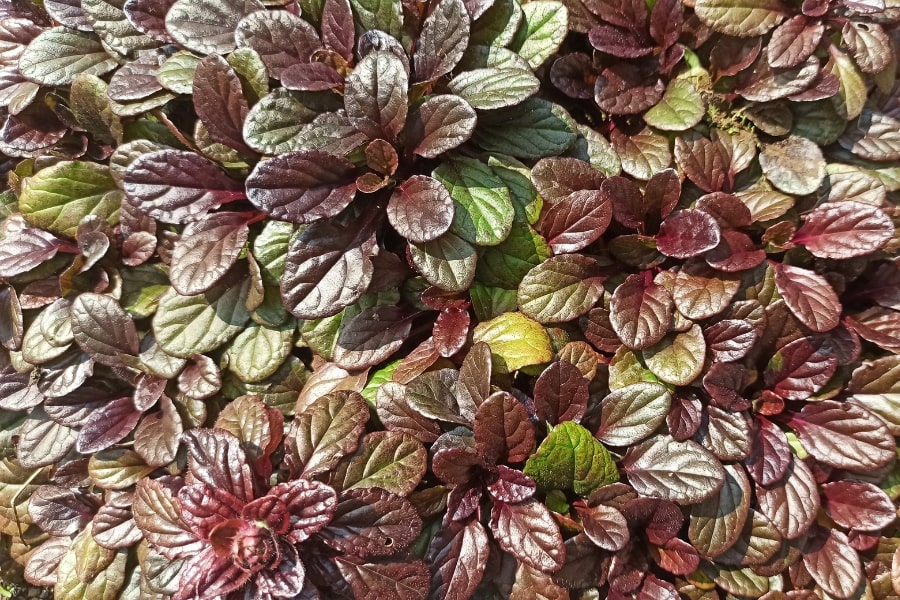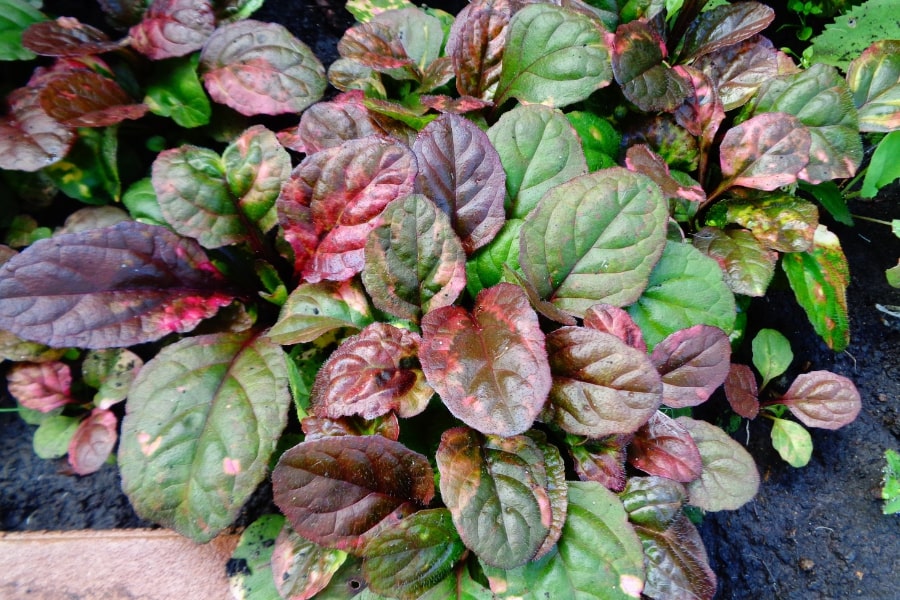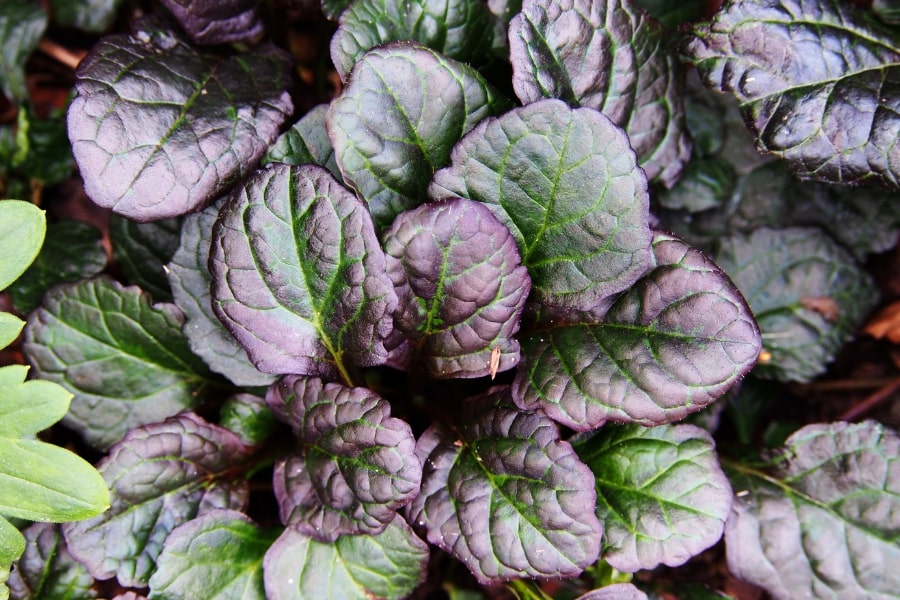Ajuga, also known as Bugleweed, is a versatile and attractive ground cover plant belonging to the mint family, Lamiaceae. With its low-growing habit, vibrant foliage, and spikes of tiny flowers, Ajuga is valued for its ability to create lush carpets of color and texture in various garden settings. Ajuga species typically form low, spreading mats that hug the ground.

Our Selection of Ajuga
At Martin Garden Center, we carry Ajuga year-round. The primary varieties include, in 4″ containers, Bronze Beauty, Burgundy Glow, Caitlin’s Giant, Chocolate Chip, and most recently Mahogany. While we won’t have all these varieties stocked all year round, we do a very good job of it. On occasion, we will offer 1-gallon varieties of Ajuga from time to time. But, these larger varieties are not consistently available.
Growing and Caring for Ajuga
Ajuga prefers partial to full shade, making it an excellent ground cover for areas with limited sunlight, such as under trees or along the edges of buildings. However, some varieties can tolerate more sun, especially in cooler climates. Well-draining soil is crucial to prevent waterlogged conditions, as Ajuga does not tolerate consistently wet feet. Before planting, amend the soil with organic matter to enhance fertility and drainage.
Plant Ajuga in the spring or fall for optimal establishment. Space the plants according to their mature spread, ensuring they have enough room to grow and fill in the designated area. Water the plants thoroughly after planting to help them settle into their new environment. Keep the soil consistently moist but avoid overwatering to prevent root rot. Mulching around the plants helps retain moisture, suppress weeds, and maintain a more even soil temperature.
A balanced, slow-release fertilizer applied in the spring can support healthy growth. Be cautious with high nitrogen fertilizers, as they may encourage lush foliage at the expense of flower production. Pruning is minimal, but removing spent flower spikes after blooming can help maintain a tidy appearance. If the plants become overly dense, thinning out crowded areas can rejuvenate them and improve air circulation.

Leaves and Flowers
Ajuga is prized not only for its ground-covering capabilities but also for its attractive foliage and charming flowers. The leaves come in various colors, including shades of green, bronze, burgundy, and variegated patterns. The foliage often forms dense rosettes, creating a carpet of color and texture. In addition to the leaves, Ajuga produces spikes of small, tubular flowers in late spring to early summer. The flower colors can range fromm shades of blue and purple to pink or white, depending on the cultivar.
Uses in the Garden
The primary use of Ajuga is as a shade garden ground cover. Its spreading habit and low growth make it an excellent choice for filling in empty spaces, preventing weed growth, and creating a vibrant carpet of color. Ajuga’s low-growing habit and attractive foliage also make it suitable for edging along garden borders or pathways. The plants create a neat and defined edge, adding structure and visual interest to the garden.
Ajuga’s preference for partial to full shade makes it ideal for planting under trees or in shaded areas where other plants may struggle. It provides a reliable ground cover solution in challenging growing conditions. The spreading nature of Ajuga also makes it effective for erosion control on slopes or hillsides. The dense mat created by its stolons helps stabilize the soil, preventing erosion and promoting soil conservation.

Frequently Asked Questions
Is Ajuga Invasive?
While Ajuga is known for its spreading habit, it is not typically considered invasive in the aggressive sense. However, some varieties may spread more vigorously than others. Regular monitoring, occasional thinning, and planting Ajuga in areas where its growth can be managed are effective strategies to prevent over-expansion.
Is Ajuga Deer-Resistant?
Ajuga is generally considered deer-resistant, making it a suitable choice for gardens where deer browsing is a concern. The aromatic foliage of Ajuga may contribute to its resistance to deer and other herbivores. However, individual deer preferences can vary, and in times of severe food scarcity, no plant is completely deer-proof.
Does Ajuga Die Back in the Winter?
Ajuga is a semi-evergreen perennial. While it retains some foliage during winter, it may experience dieback in colder climates or during harsh winter conditions. The extent of dieback can vary depending on factors such as the severity of winter temperatures, snow cover, and the plant’s location and health. Despite winter dieback, ajuga is known for its resilience and typically regrows from the base once temperatures warm up in spring. In the Upstate, we enjoy Ajuga as a perennial.
